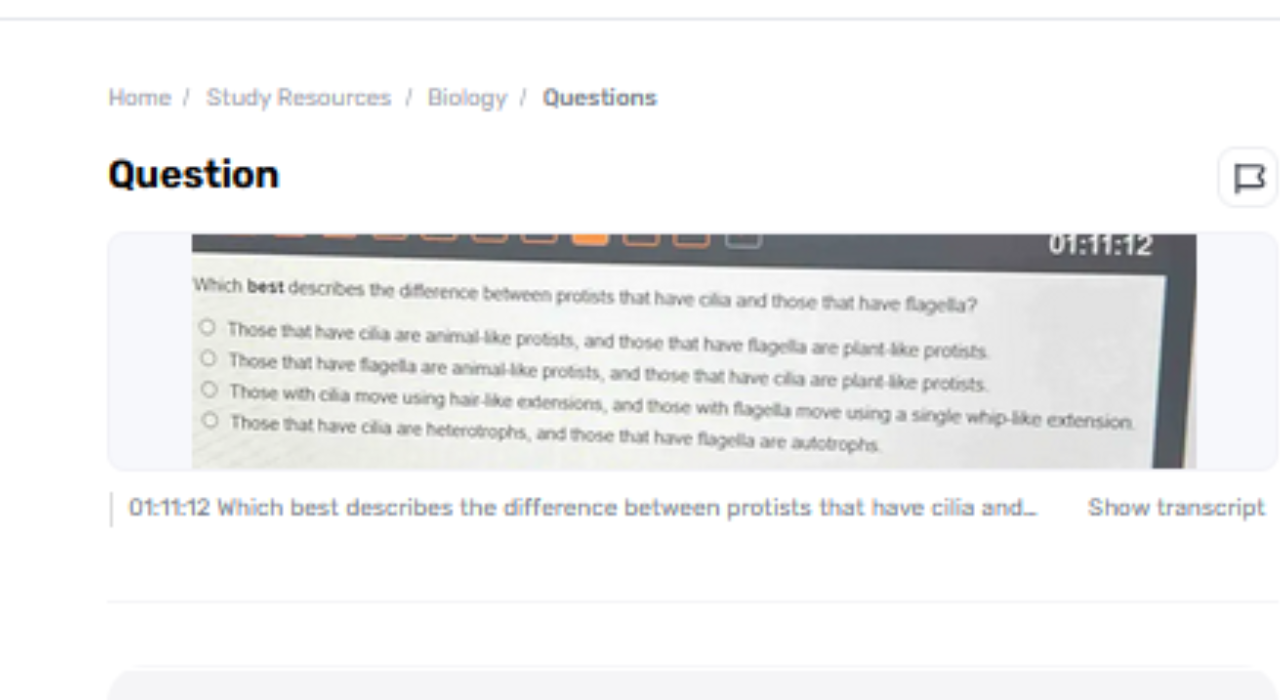Protists are a particular bunch of eukaryotic microorganisms that play different parts in circumstances. which best describes the difference between protists that have cilia and those that have flagella? Among them, ciliates and flagellates conversation to two major bunches recognized by their modes of development. Even though both sorts of protists are competent in progression and bolstering, the structures they use cilia and flagella differ fundamentally in their diagram, work, and developmental proposition. This article will look at these contrasts in detail, covering their collaborator groupings, enhancement components, utilitarian parts, common impacts, developmental centrality, and common commitments to our understanding of protist-changing qualities.
Recognizing Between Ciliated and Flagellated Protists
Ciliated and flagellated protists separate on a fundamental level in their advancement structures: ciliates have distinctive brief, hair-like cilia, whereas flagellates have one or two long, whip-like flagella. Cilia lock in empowered advancement and offer help in supporting and sensation, even though flagella permits driving constrain through a whip-like advancement. These collaborator contrasts impact their utilitarian parts, natural commitments, and developmental changes, reflecting their particular techniques for survival and characteristic interaction.
Fundamental Contrasts
Ciliates and flagellates alter in a general sense interior of the structure of their locomotory organelles. Ciliates have diverse brief, hair-like projections called cilia, which cover the surface of their cells. These cilia are facilitated in columns or spirals and beat in empowered plans to move the living being through its environment. In isolated, flagellates routinely have one or two long, whip-like people known as flagella. These flagella increment from one conclusion of the cell and move in a waving or turning advancement to drive the living being forward. The characteristic right hand separate lies interior the number and length of these organelles: ciliates have different brief cilia, whereas flagellates have less long flagella.
Headway Components
The headway components of ciliates and flagellates are an encouraging result of their collaborator contrasts. Ciliates utilize the encouraged beating of their cilia to create streams that move them through water or other liquids. This beating can be synchronized to realize redress directional progression and licenses ciliates to explore complex circumstances, such as inside the significant fluid layers of sea-going plants. Flagellates, on the other hand, depend on the rotational or undulatory advancement of their flagella to move themselves. The flagella move in a whip-like way, as regularly as conceivable in a winding or corkscrew advancement, which can be more compelling for traveling through thick liquids or over surfaces.
Utilizing Gauth for Productive Homework Offer help
Make an Account and Set Up Your Profile
Start by stamping up on the Gauth location or app, where you'll make an account and permit data generally your shrewd level and subjects of interested. This profile setup guarantees fair custom-fitted assets and coaching basic to your needs.
Look at Assets and Orchestrate Mentoring Sessions
Once your profile is set up, browse through Gauth assets, such as bearings Works Out and Hone Works Out, to discover materials that organize your homework prerequisites. Orchestrate mentoring sessions with subject aces at times that suit you, ensuring you've got the opportunity to start personalized offer assistance.
Take a captivated in Sessions and Diagram Materials
Jolt in effectively within the middle of your coaching sessions, utilizing the defiant accessible to discussion around and clarify your homework questions. A brief time a while later, survey the recorded sessions and any hone materials given to brace your understanding and include up to your homework successfully.

Conclusion
In rundown, the contrasts between protists with cilia and those with flagella are stamped by their principal and important changes. Ciliates are characterized by their diverse, brief cilia utilized for headway, nourishing, and material capacities, even though flagellates have less, long flagella that provide driving drive through a distinctive component. Both sorts of protists have basic natural parts and developmental histories that reflect their differentiating modifications. Understanding these contrasts advances our appreciation of the complexity and versatility of protists inside the broader setting of microbial life.


